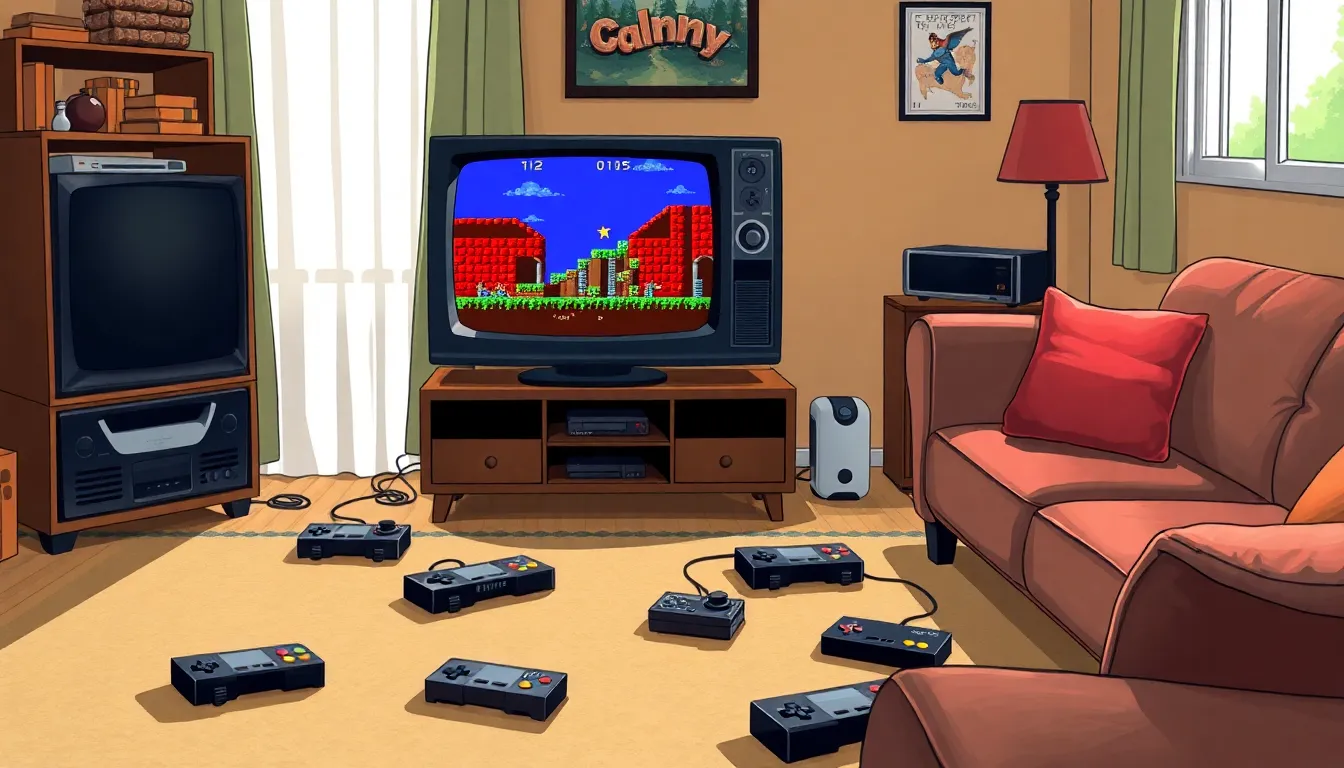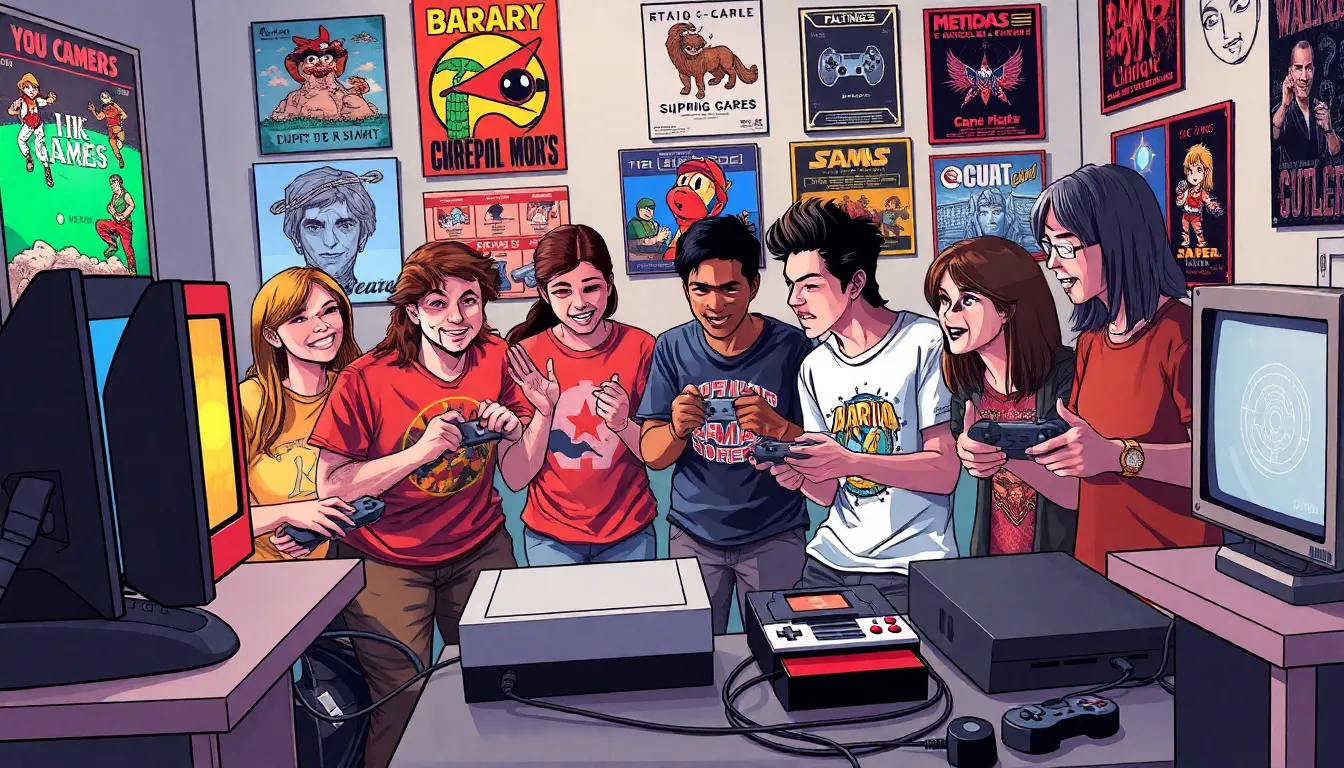In a world dominated by cutting-edge graphics and virtual reality, retro video game culture is making a triumphant comeback, and it’s here to remind everyone that pixelated adventures can still pack a punch. From the quirky charm of 8-bit characters to the unforgettable soundtracks that echo through nostalgia, retro gaming isn’t just a hobby; it’s a full-blown cultural phenomenon.
Table of Contents
ToggleOverview of Retro Video Game Culture
Retro video game culture thrives on nostalgia and simplicity, captivating audiences across generations. Enthusiasts celebrate 8-bit graphics and chiptune soundtracks, fostering a deep emotional connection to games from the past. Community events, such as conventions and tournaments, enhance social engagement among gamers, allowing them to share experiences and memories.
Collecting vintage consoles and cartridges serves as a popular hobby. Many fans seek to relive classic titles like “Super Mario Bros.” and “The Legend of Zelda.” The demand for remastered versions of iconic games reflects the enduring popularity of retro gaming, with publishers often capitalizing on this trend.
Online platforms, such as Twitch and YouTube, contribute significantly to retro gaming’s resurgence. Streamers often showcase classic games, attracting viewers curious about their historical significance. Viewers engage in discussions about gameplay mechanics, cultural impact, and shared experiences, further solidifying retro gaming as a vital element of current digital culture.
The DIY spirit thrives within retro gaming culture. Fans frequently create mods, remakes, and fan art, showcasing their creativity and passion. This hands-on approach not only honors the genre but keeps it fresh and relevant in today’s gaming landscape.
Skill development remains a central theme. Players often turn to speedrunning, testing their abilities on well-known titles. Competitive aspects enhance community camaraderie, as participants compete for the fastest completion times while sharing strategies and techniques.
Retro video game culture embodies a rich tapestry of memories, community, and innovation. Its ongoing evolution illustrates how past gaming experiences continue to shape modern gaming communities.
Key Characteristics of Retro Video Games

Retro video games exhibit unique traits that distinguish them from modern counterparts. Graphics and sound design play a crucial role in creating nostalgic experiences for players.
Graphics and Sound Design
Pixelated graphics characterize many retro games, embracing a simpler aesthetic that evokes fond memories. Blocky characters and colorful environments offer a charming visual appeal, which many players find alluring. Chiptune soundtracks, composed with limited technology, showcase a creativity that resonates emotionally with audiences. Catchy melodies enhance gameplay experiences, creating a strong connection to gaming history. The limitations of early consoles fostered innovation, as developers maximized their potential through artistic styles and sound quirks. Ultimately, these elements lay the foundation for a timeless appeal that attracts new and veteran gamers alike.
Gameplay Mechanics
Simple yet effective gameplay mechanics define retro video games, promoting accessibility for players of all skill levels. Control schemes often emphasize intuitive actions, allowing gamers to quickly grasp the fundamentals. Levels frequently incorporate straightforward objectives, which focus on skill development and mastery. Challenge and reward balance encourages persistence, ensuring satisfaction through progression. Many classic titles employ limited save options, prompting players to complete games in shorter sessions. Engaging multiplayer experiences foster competition and camaraderie, as players gather to tackle challenges together. These mechanics contribute to the lasting allure of retro gaming, drawing enthusiasts to revisit beloved classics repeatedly.
The Impact of Retro Video Games on Modern Gaming
Retro video games significantly influence modern gaming, shaping design trends and player experiences. Modern titles often incorporate elements from classic games, fostering a sense of nostalgia while appealing to contemporary audiences.
Influence on Game Design
Game design in modern titles frequently reflects retro inspirations. Simplified mechanics from the past promote accessibility and attract a broad player base. Developers optimize existing gameplay elements while adding layers of complexity. Many games revive distinct art styles, balancing vibrant visuals with nostalgic aesthetics. Popular franchises often feature modern adaptations of classic gameplay. Independent developers increasingly embrace retro-inspired projects, showcasing the versatility of older design principles in innovative ways.
Nostalgia and Its Role
Nostalgia plays a crucial role in the appeal of retro gaming. Players often seek familiar experiences from their past, which impacts purchasing decisions. Remastered versions breathe new life into classic games, inviting old fans and new gamers alike. Emotional connections resonate strongly, driving community engagement across forums and social media platforms. Events celebrating retro games highlight the shared histories of players, reinforcing bonds among them. Merchandise featuring beloved titles enhances the sense of nostalgia and community involvement, showcasing the lasting impact of retro gaming culture.
Community and Social Aspects of Retro Gaming
The retro gaming community thrives on shared experiences and nostalgic memories. Gamers of all ages connect over their favorite titles, fostering camaraderie and engagement.
The Rise of Retro Gaming Conventions
Retro gaming conventions have surged in popularity, bringing together enthusiasts from various backgrounds. Events like the Portland Retro Gaming Expo and MAGFest host thousands of attendees, facilitating conversations about beloved games. Vendors at these conventions offer rare collectibles, providing attendees with opportunities to expand their collections. Activities include panel discussions featuring industry veterans, fostering an environment of learning and nostalgia. As these conventions grow, they create vibrant social spaces where friendships form and stories get shared.
Online Communities and Resources
Online platforms serve as essential hubs for retro gaming enthusiasts. Forums like Reddit and specialized Facebook groups allow participants to share tips, game recommendations, and restoration advice. YouTube channels dedicated to retro gaming showcase gameplay, reviews, and in-depth analyses of classic titles. Websites such as RetroCollect provide valuable resources for collectors, including price guides and forums for trading. Streaming platforms like Twitch engage audiences with live gameplay and community discussions, reinforcing connections among fans. These digital spaces support ongoing conversations, enhancing the sense of belonging within retro gaming culture.
Retro video game culture thrives as a vibrant blend of nostalgia and innovation. It’s a testament to the lasting impact of classic games that continue to resonate with new generations. From pixelated graphics to engaging community events, the charm of retro gaming fosters connections that transcend age and experience.
As enthusiasts gather to celebrate their shared love for these timeless titles, they create a dynamic community that thrives on creativity and collaboration. The influence of retro gaming is evident in modern design trends and player experiences, ensuring that the essence of these beloved classics remains alive. This culture not only honors the past but also paves the way for future generations to explore and enjoy the rich history of gaming.

